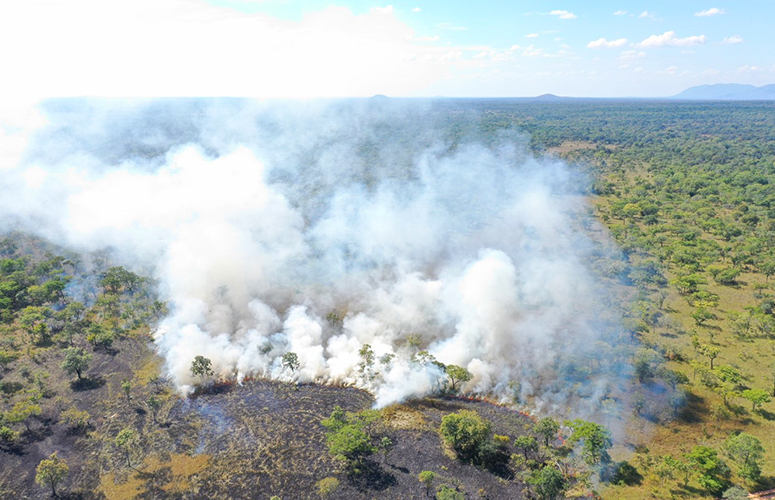A team of Spanish and Dutch researchers has estimated that the area affected by fires in Africa is 80% higher than previously thought. Given that Africa accounts for by far the bulk of the global burned area, this new finding has serious implications for global carbon emissions into the atmosphere. The results have been published in the Proceedings of the National Academy of Sciences of the United States.
The African burned area is much larger than previously thought
The research, in which the UPV/EHU-University of the Basque Country has participated, provides new data on small fires and how they impact on greenhouse gas emissions
- Research
First publication date: 02/03/2021

Fires tend to be reported in the media when they burn in forested regions close to human settlements, but most of the area that burns each year occurs in tropical savannahs where fires are an integral part of the ecosystem. The total area burned in these ecosystems is roughly equivalent to the size of the EU. So far, large-scale assessment of the burned area has been based on satellite data with a relatively large pixel size or footprint. And for fires to be detected, an entire pixel of the image needs to appear burnt.
In the paper ‘African burned area and fire carbon emissions are strongly impacted by small fires undetected by coarse resolution satellite data’ recently published by the PNAS scientific journal, the official journal of the National Academy of Sciences of the United States, the researchers Rubén Ramo and Emilio Chuvieco of the University of Alcalá, and Ekhi Roteta and Aitor Bastarrika of the UPV/EHU have gathered data on burnt areas provided by the European Sentinel-2 satellite and have compared them with conventional data with a lower resolution.
The resolution of the satellite imagery is much finer, 20 by 20 metres as opposed to the 500 by 500 metres of the global products previously used to make estimates of fires that have occurred. To their surprise, they found that relatively small fires, which remain undetected in the lower resolution data, contribute almost as much to the total burned area as larger fires. In other words, small fires are much more important than previously thought.
Vrije Universiteit Amsterdam researchers Dave van Wees and Guido van der Werf calculated the corresponding carbon emissions from such fires and found that the additional emissions were higher than the total emissions from fires in South America. Total fire emissions in Africa are currently estimated to be equivalent to 13% of global fossil fuel emissions. However, since CO2 emissions from these savanna fires are offset by the regrowth of vegetation in the affected area, the estimated increase in the burned area does not contribute directly to the build-up of CO2 in the atmosphere, as fossil fuels do, but it does increase the contribution of fires to the budgets of other greenhouse gases such as methane (CH4) and nitrous oxide (N2O).
Small fires are therefore crucially important in characterising the most important global-scale disturbance agent, a critical factor in sub-Saharan Africa so far undetected by the use of low-resolution satellite imagery. It can be concluded that small fires in Africa are twice as high as previously thought and that this biomass burning is a major contributor to global greenhouse gas and aerosol loads.
This research was carried out in the framework of the European Space Agency's FireCCI project, which aims to generate long-term dataset products for climate change assessment.
Bibliographic reference
- African burned area and fire carbon emissions are strongly impacted by small fires undetected by coarse resolution satellite data
- PNAS March 2, 2021 118 (9) e2011160118
- DOI: 10.1073/pnas.2011160118



